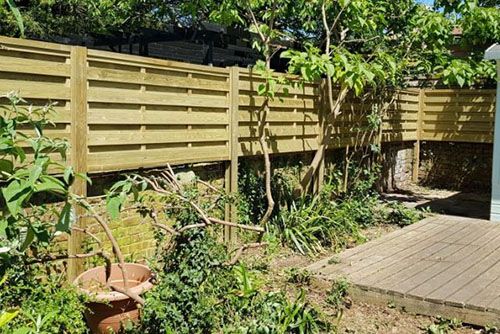Luckily, there are many ways to protect your fence from windy conditions. One simple way is to install wind holes in the fence. Wind holes are little holes in the fence that stabilize air flow around a solid object. In addition, you can install slatted or semi-solid panels for additional wind resistance. If your fence is made of wood, there are some types of wood that are better suited for windy weather.
Wire mesh fences
To prevent wire mesh fences from blowing down in the wind, it is essential to tension the mesh properly. If the mesh is too loose, it will pvc picket fencing around and cause damage. On the other hand, if it is too tight, it will cause creases and put pressure on the eyelets. The best way to tension mesh is to install it in ten-meter sections, braced at each end with cable ties on either side of the top bar. It is also essential to use all eyelets, as not doing so can cause the fence to fail.

If you live in an area where the wind is a problem, consider installing a wire mesh fence. It is one of the strongest domestic fences available and can be installed in many different styles and designs. It is also extremely attractive, and it offers great security and stability. It also works well in areas with high wind, as it won’t lean or bend during a gust of wind.
Semi-solid or slatted fence panels
When buying a fence panel, make sure to buy a sturdy one that’s built to withstand high winds. Semi-solid and slatted fence panels are prone to blowing over during strong winds, and those made of weak materials are especially vulnerable to wind damage. Instead, choose a heavy-duty one that has slots for screws that will secure the panels. If you’re unsure how to do this yourself, you can always have a fence professional install your panels.
Wind-resistant panels are available in a variety of designs. Slatted or semi-solid panels provide less wind resistance than solid panels but are still more aesthetically pleasing. Various designs such as Venetian, Canterbury Combi, and Louvre fence panels feature gaps between the panels to let air pass through while maintaining privacy.
Adding a plant to the lee side of a semi-solid or slatted panel will help prevent it from being blown down in strong winds. Wind turbulence is extremely destructive to newly planted gardens and can literally suck the plants out of the ground.
Using wind holes to stabilize air flow around solid objects
Wind vents are a great way to test the stability of airflow around a solid object. However, they may also increase wind loading. This can make a solid object unstable structures can be unsafe. A study by Kalamazoo Banner Works found that wind vents actually caused greater stress on the fabric and increased vibrations. It also weakened the integrity of a banner.
Wood fence types that are well-suited for wind
Choosing the right wood for your fence is essential for its stability. It must be anchored to avoid blowing over in high winds. Posts should be at least 30 inches deep and set seven feet apart from each other. If you live in a windy area, you should consider installing a fence with horizontal rails.
Wind damage can be caused by several factors. The height of the fence and its length determine the strength of wind the fence will withstand. Cedar and redwood are two common types of wood for fences. Cedar and redwood are both resistant to insects and are the ideal choice for a fence.
Strong posts are the foundation of a windproof fence. If the posts are weak or rotted, they will easily pull out during strong winds. Choose posts made of high-quality materials and use anti-rust products to keep them protected.
